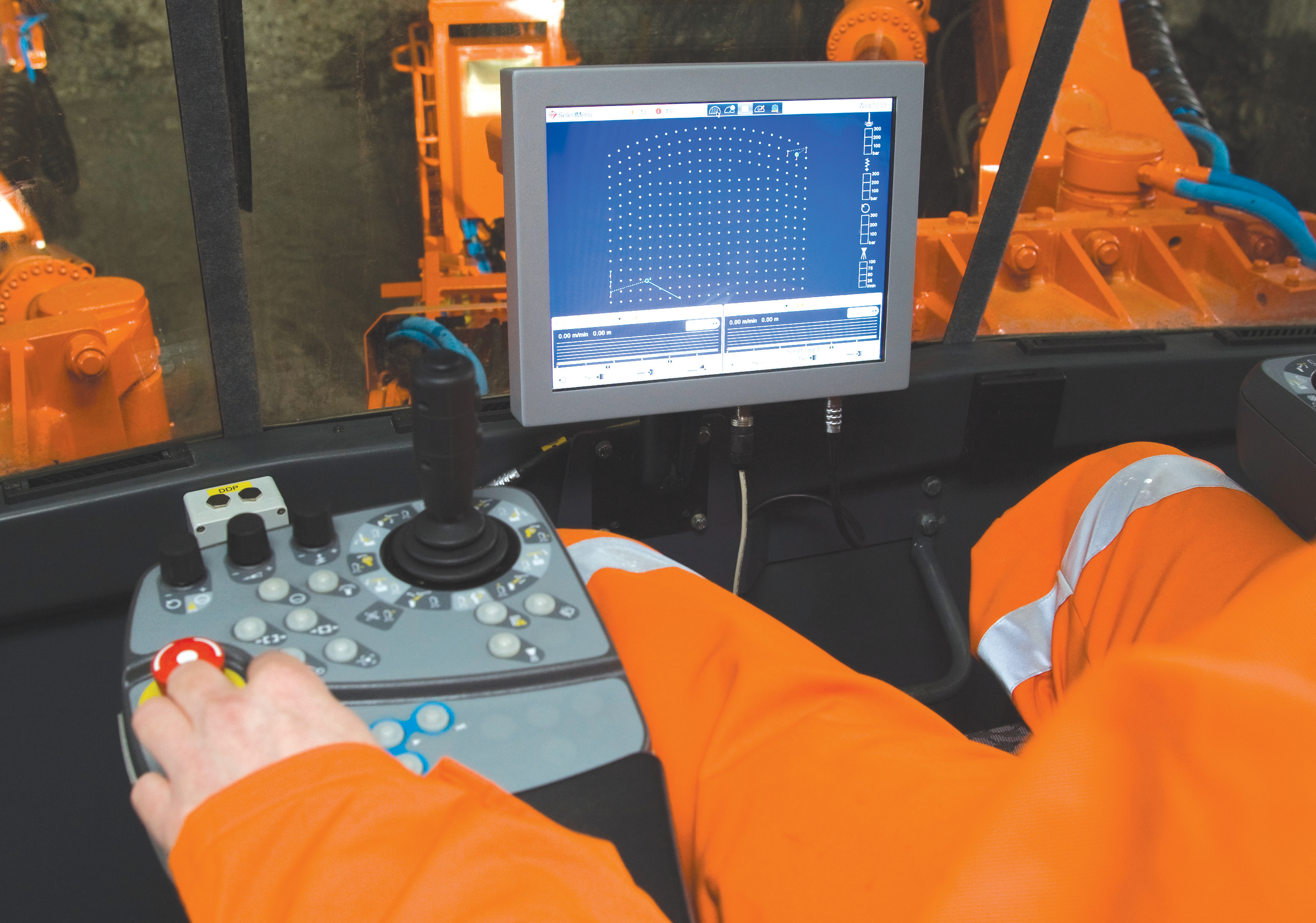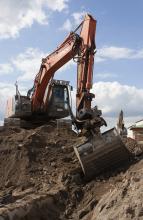A novel approach to utilities installation will lengthen the life of Helsinki's streets, reports Mike Woof. A major utilities project in Finnish capital Helsinki will offer huge benefits for the city's streets and traffic flow rates in years to come. A new tunnel system is being excavated under Helsinki for the power company Helsingin Energia, although this will be co-owned by the city. Called the Common Utility Tunnel (Meilahti-Pasilak-Käpylä LU2), the excavations form an extensive network spreading out un

The drilling sequence for each round started at the bottom of the face, to avoid problems caused by cuttings falling down on the drill
A novel approach to utilities installation will lengthen the life of Helsinki's streets, reports Mike Woof.
A major utilities project in Finnish capital Helsinki will offer huge benefits for the city's streets and traffic flow rates in years to come. A new tunnel system is being excavated under Helsinki for the power companyHelsinki's waste water will not flow through pipes in the tunnels though as it is gravity fed and will continue to use a separate system.
What is innovative about this major excavation project is that the construction of the tunnel network means that Helsinki will be virtually free from the need to have surface utility works in the city's streets. Tackling the issue of utility streetworks will have a major impact on reducing localised traffic disruption and congestion in the city.
Given Finland's cold winters and the additional wear and tear on roads from this and the freeze thaw effect, reducing the need to dig up surfaces for utility work will help extend the overall life of Helsinki's urban road surfaces.
Finish contractor
The contractor's 18-month excavation contract started in September 2007, with the drilling now complete and lining of the tunnels underway.
Martti Keskinen, development manager for Lemminkäinen Infrastructure said: "We built eight new shafts and used 9,250 rockbolts and 5,410m³ of shotcrete."
The excavated tunnel face is 62m wide, with a slight slope towards the centreline to facilitate drainage and also to ensure a greater structural integrity. A large 26,000m³ cavern has also been constructed as an electrical station and in all Lemminkäinen Infrastructure has had to remove some 110,000m³ of rock for its phase of the project. The tunnels runs through rock that is almost ideal for drilling and blasting techniques and this means that the network's structural integrity will have low maintenance needs in the long term.
Keskinen said: "Here in Helsinki it is possible because the rock quality is very good."
Efficient drilling and blasting can play a major role in ensuring that a project is cost-effective. Removing too much rock (overbreak) increases costs substantially while tolerances on tunnel width and height rule out sizes that are insufficient. Accurate drilling also improves the quality of the tunnel walls, with long term benefits to tunnel integrity and prevents blasted material from being oversized, which can increase the time required for loading and hauling as well as wear and tear on the load and haul fleet, further boosting costs.
Time is the other main cost factor and Pertti Koivunen, product manager for tunnelling jumbos and underground drills at
A key factor in the contractor's ability to deliver this stage of the project on time and on budget was the use of the latest, highly sophisticated drilling technology.
Lemminkäinen has used a three boom Sandvik DTi1130 jumbo that features an additional boom equipped with a basket for longhole drilling. The new machine with its powerful software, automated drilling functions and productive drifters, has played a vital role in the operation.
Keskinen said: "It does not need a great operator to get a good result."
Koivunen said that the new generation DTI rigs support fully-computerised face drilling according to a design plan that can be loaded into the onboard computer using a conventional flash disc. Manual control is also possible, when required.
"Drilling rock anything can happen, conditions change so you may need to switch to manual operation."
Koivunen explained that the new DTi rigs have been specifically designed to tackle shortage of skilled operators. He said: "They're very easy to use. You don't need a university degree to operate them and you can take people from the street and train them to run these machines."
The DTi1130 rig is the largest of the four models in the new line-up and features three of the latest HFX5T drifters, can handle tunnel cross sections of up to 177m², has a new large cab that offers high visibility of the working area and runs on the firm's proven TC11 carrier.
The rigs are accurate and fast and Koivunen said: "It's necessary to make good collaring and then ramp up to full drilling power."
The rig control system can also sense rock conditions and can recognise 13 different parameters while drilling in all. Koivunen said, you need electronics to recognises the changes and adjust the machine accordingly."
These new generation machines can be hooked up to the latest laser-guided machine control technology from
The software provides the user with an economical drill and blast plan, while fast editing of the drill pattern can be achieved. Keskinen said: "You can create a drill plan in one hour. With a well-designed drill plan, an average operator can do a top job."
He added that this new drilling rig technology will win further benefits for Lemminkäinen in the long term. He said, "Operators are hard to get and experienced operators even more so. Our company is growing and it's not easy to get new operators."
The work was carried out on a double shift basis, five days/week and the advance rate average around 92m/week, with the excavation phase finishing well within the time frame allowed.
Keskinen said: "What was special for this project is that it ran underneath a TV company and that made excavation very difficult. We had to be careful with vibration and we were not allowed to make noise at certain times."
The latest non-electric detonation technology was used, with a 42 millisecond delay in between the detonations to allow an integrated blast. Vibration sensors were installed at 29 different points around the site and the results could be measured through the Internet just two minutes after each blast.
Keskinen said: "It was good for us because we could see the results quickly."
Each round featured some 100 holes and took around 2 hours 40 minutes to drill the round. Drilling was also carried out from the centre of the face moving outwards as this reduced the risk of holes deviating towards each other. (This effect is caused by stresses in the rock where holes are drilled, which can result in deviation in subsequent holes drilled nearby.) To reduce costs, overbreak was minimised. Keskinen said: "We only took away the rock that was planned and no more."
The rock hardness varies from 160-220MPa and is well within the drilling parameters of the machine, although the presence of quartz in the rock means that there is a fairly high wear rate on the bits.
The 54mm diameter Sandvik bits used have lasted for around 400 drill metres on average, managing from 20-50holes before needing regrinding. Following each blast, the contractor used a conventional
The client determined the number of bolts required though due to the competent nature of the rock, only around two bolts/tunnel metre were required. A twin boom Sandvik Axera T07 machine was used for bolting, while charging has been carried out using a machine from









